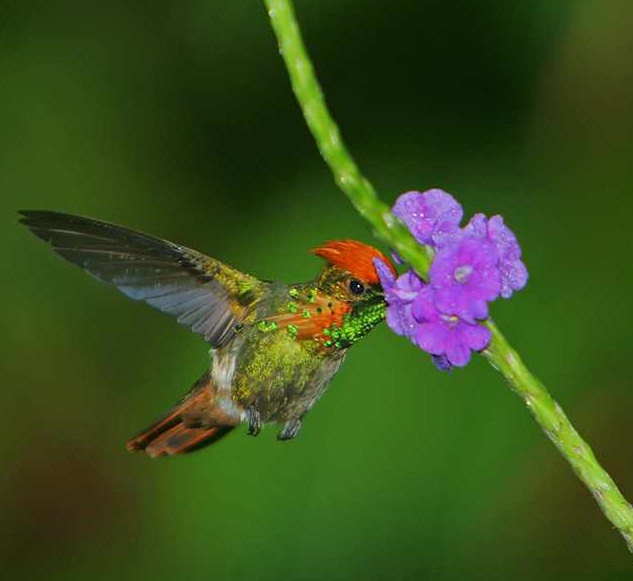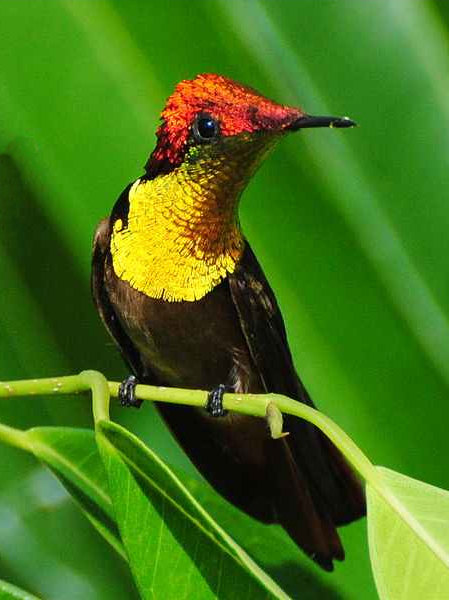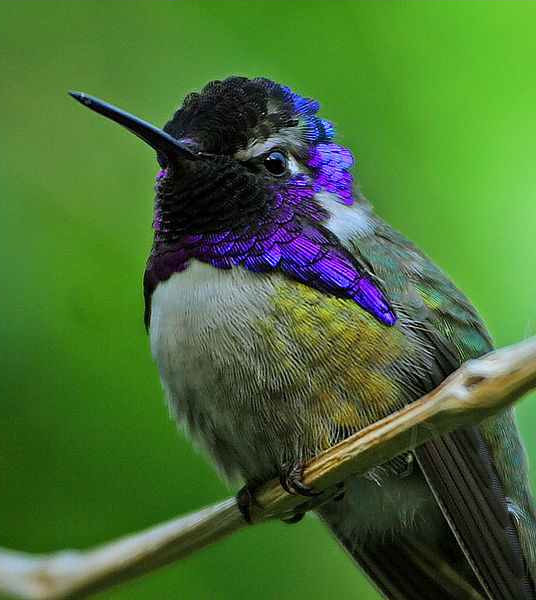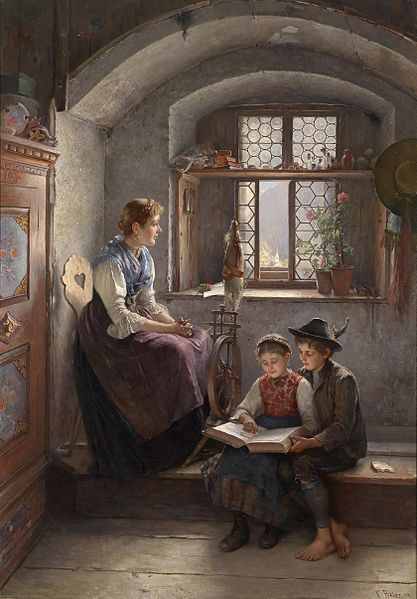by Plinio Corrêa de Oliveira. Catolicismo, No. 707, November 2009(*)
ONCE as I was sitting in the small porch of a farmhouse, a hummingbird suddenly stopped in the air and began sucking nectar from the flowers of climbing ivy. He ‘kissed’ each flower in turn.
The hummingbird’s flight was similar to an arrow’s trajectory — so inflexible and straight — but as it sucked with its small pointed beak it would shake. It would begin with a series of small movements, then flying around the flower suck all its honey.
As it flapped its wings, every vibration seemed to be new. One would say it was like a musical instrument playing different music characteristic of the hummingbird’s style. I pondered that it has rules of its own — unknown to me — and wondered when it would interrupt that movement.
Then, suddenly and unexpectedly, the hummingbird would leave that flower with such complete abandonment that it would seem as if it had never existed, and without the slightest hesitation move on to another. The hummingbird is the very image of decisiveness: when it is time to choose, it does not hesitate; when it is time for sucking, it does it in earnest; when it is time to leave, it stops and rejects.
The bird abandons the flower without any nostalgia, but also without bitterness. One has the impression that, having extracted the last drop of nectar, the bird is released and flies somewhere else like a rocket. All this is done with such lightness, delicacy, and distinction that it could be called a dance. In fact it is much more than a dance: it is flight.
Possibly the next time each one sees a hummingbird fly, this description will serve as a sort of slow motion film.
It is enchanting to observe two very beautiful examples of movement in the animal world: a walking lion and a flying hummingbird. How different they are! How many beings God created to entertain us!
The blue and green hummingbird is a precious jewel that God created for man to look at, though never to hold, and to feel the charm of a fleeting thing that passes quickly by. In this valley of tears, the hummingbird aptly represents our hope and desire for Heaven. Divine Providence created in this land of exile several fleeting beings. They are excellent beings which would cease to be excellent if they were not fleeting; for that is how they show us some beautiful aspects of Heaven.
Being a place of exile, this Earth cannot offer us heavenly impressions in a stable manner. However God had mercy on us and sent some fireflies from celestial paradise who, with their flickering light, give us glimpses of heavenly bliss.
True Repose
Nothing is more difficult for modern-day man than to rest — especially to rest well.
Some think films, theater, and other similar entertainments are excellent ways of resting. Nonetheless, repose means, above all, to relax one’s spirit. All modern entertainment tends to constantly stimulate excitement. Modern day man no longer knows how to entertain himself without excitement. Now, it is impossible to reconcile repose with excitement and this is why people become worn out before their time, as they are in constant electrifying contact with our restless civilization.
One cannot consider as repose forms of entertainment that wear us out, instead of restoring our energy; that excite, instead of relaxing; that agitate, instead of calming.

Madame de Lamballe reading to Marie Antoinette and her daughter, Marie Thérèse Charlotte. Painting by Joseph Caraud
In an environment where even homes have been invaded by exhausting and agitated music, the reading of a nice, relaxing book gives us an agreeable sensation like leaving a stuffy room to breathe the fresh country air.
(*) Excerpts from the lecture given on October 26, 1980.



















